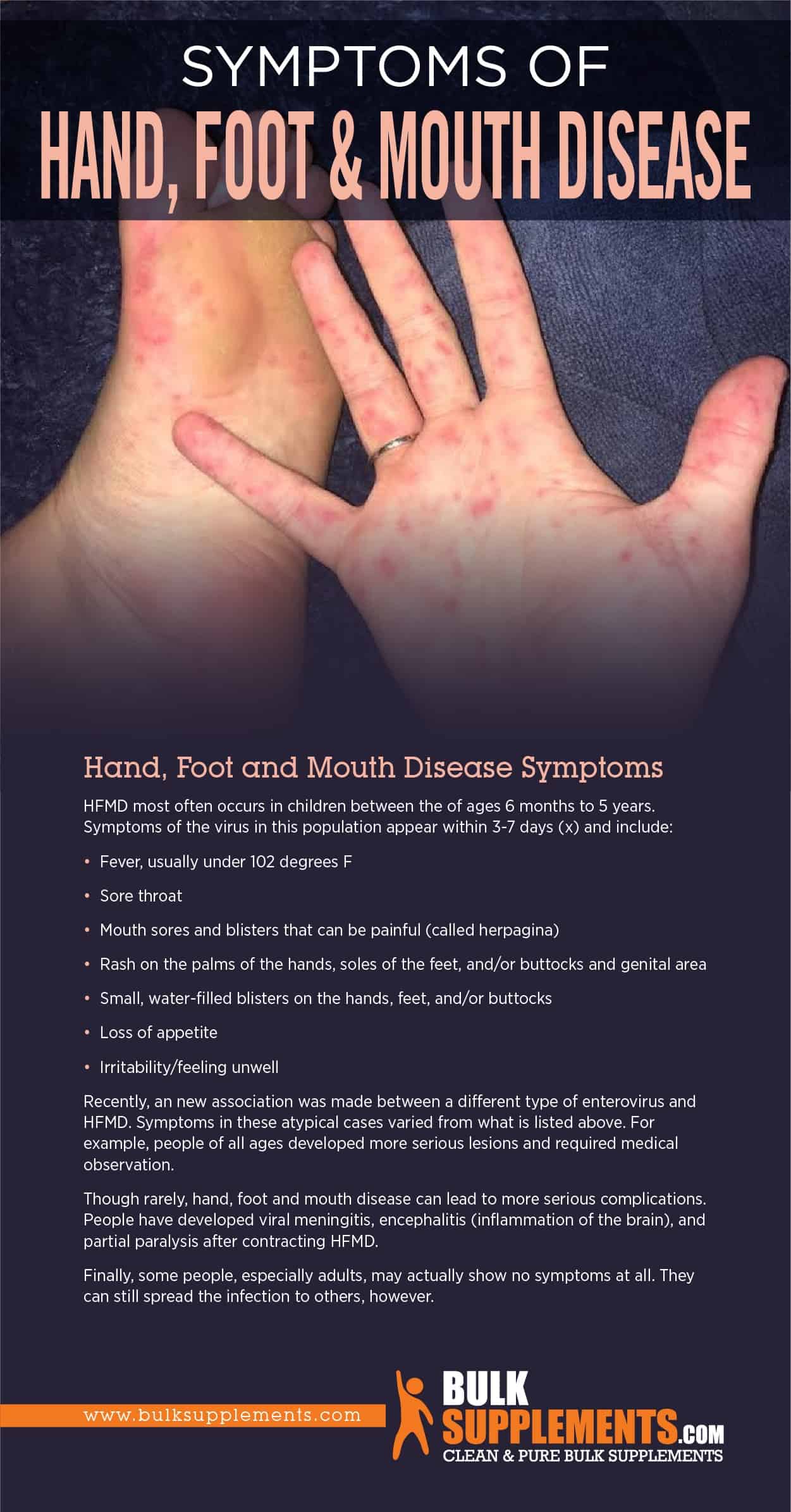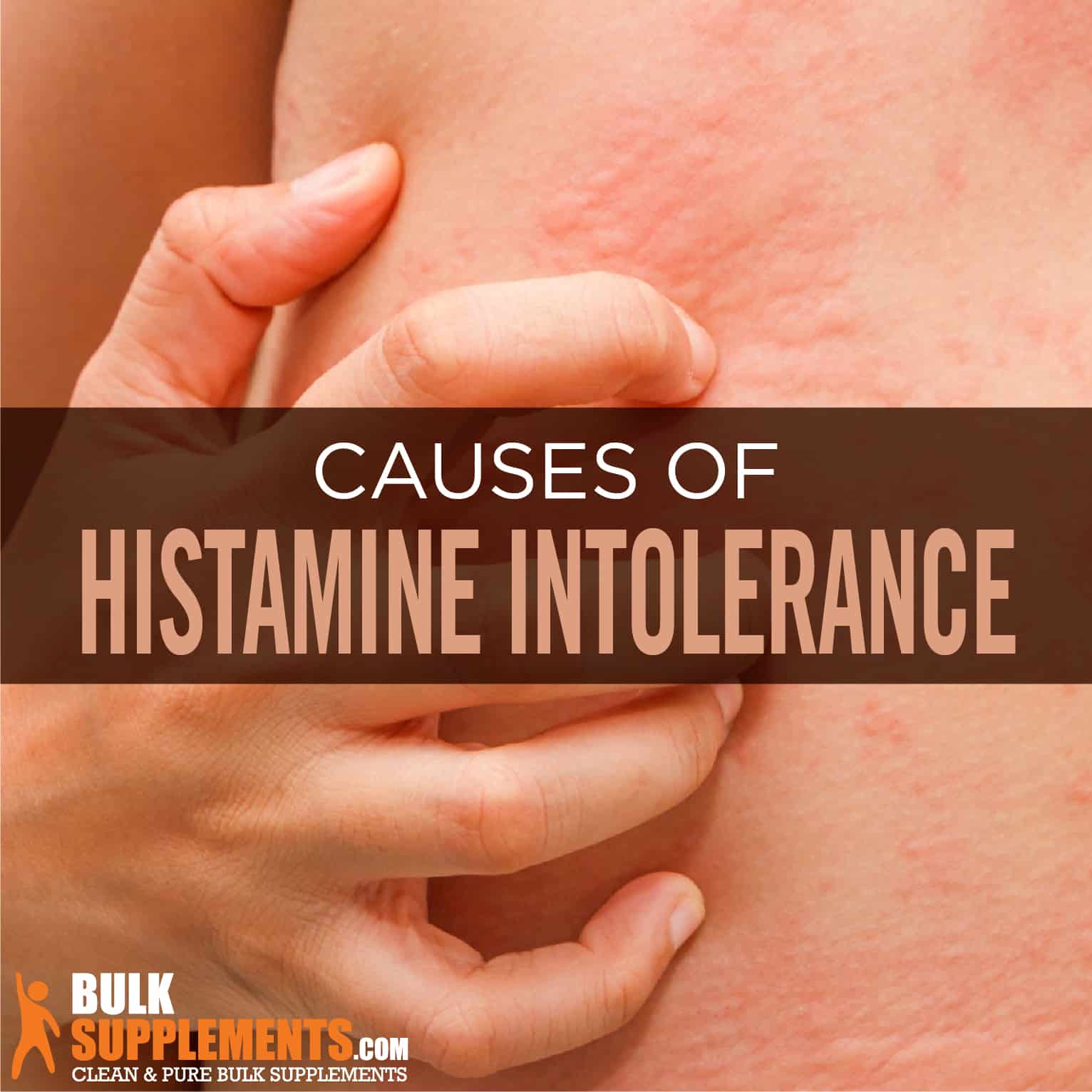Hand, Foot, and Mouth Disease (HFMD): Symptoms, Causes & Treatment
by James Denlinger Digital Marketing StrategistWhat is Hand, Foot, and Mouth Disease?
Hand, foot, and mouth disease, or HFMD for short, is an infection spread by a virus. Although older kids, teenagers and adults can be infected, HFMD is primarily a childhood illness. If you notice a blister on a toddler’s lip or rash on top of the foot, those indicators may be symptoms of this disease.
This disease is contagious, but it is usually not life-threatening. In most cases, patients take from a week to 10 days to recover completely without any medical treatment. However, appropriate treatment and supplements may expedite the process of recovery and help for the baby’s hands to become rash-free again.
Complications from the disease are rare. However, some potential problems may include brain inflammation (encephalitis), viral meningitis and polio-like paralysis.
Symptoms of Hand, Foot, and Mouth Disease
Hand, foot, and mouth disease is a mild infection, but the symptoms can be noticed easily. In most cases, you will detect more than a single sign of HFMD:
Fever
Headache and fever are common symptoms in viral infections, and it doesn’t come as a surprise that they are one of the first signs of HFMD.
Sore Throat
The infected person might have mild discomfort, although a blister in the throat is also possible. Mouth sores that can be painful can also appear. These are known as herpangina.
Rash
If you notice a viral rash that your baby has developed recently, that may be an indicator of HFMD. Children will probably resort to scratching itchy hands and feet, and redness may rarely develop to blisters. You may also notice the infected person’s buttocks in a rash, as well as elbows, knees and genitals.
Tongue Blisters
A painful bump on the tongue may appear as a consequence of the hand, foot, and mouth disease. Spots on the tongue can occur, as can a rash around the mouth. Since this is a viral infection, mouth to mouth contact with the infected person is not recommended.
Irritability
If your child is more irritable than usual, moodiness may be caused by HFMD. They may be annoyed because of sores in the nose, or other symptoms.
Please note that one does not have to show all these symptoms to suffer from the disease. Adults may be contagious even without any of the signs above, which is why hand to hand contact is not advised if you suspect HFMD.
 PIN IT
PIN ITCauses of Hand, Foot, and Mouth Disease
The crucial aspect to consider is that HFMD is a contagious viral infection. The family of Picornaviridae viruses is the primary cause and carrier of this disease. Let’s take a look at the main causes of HFMD:
Coxsackievirus
Some reports indicate that coxsackievirus can be a cause of HFMD. It actually seems to be the primary factor of the disease in adults. Recurrent Coxsackie viruses in adults can lead to the appearance of HFMD as their underlying cause.
Contact with an Infected Person
This is the most common way to transmit HFMD. Since the primary source of the disease is oral ingestion, that means nasal and throat secretions, blister fluids, saliva and stool are all infectious.
Fortunately, hand, foot, and mouth disease rarely leads to complications. When coxsackie virus is the cause, it may develop into encephalitis or viral meningitis, which may be potentially life-threatening.
Preventing Hand, Foot, and Mouth Disease
None of the following guarantees prevention, but here is a list of things you can use to reduce the risk of HFMD:
- Avoid close contact with people dealing with hand, foot, and mouth disease. It is important to avoid sharing cups or utensils with them.
- Make sure to clean toys and any other frequently touched items or surfaces.
- Don’t forget to wash your hands. If you were using the toilet or changing your child’s diapers, use antibacterial soap and wash your hands for 20 seconds or more.
Treatment of Hand, Foot, and Mouth Disease
Before the treatment starts, a medical professional should confirm the diagnosis. The expert will consider the age of the patient, as well as the environment of exposure. Thus, these assessments will also foster a thorough check of mouth sores and rashes.
It is not obligatory to visit a doctor if you notice HFMD symptoms because the chances are your body will deal with it on its own. However, it is essential to make an appointment with the doctor if the blisters are so severe that you have problems taking fluids.
Visiting a medical professional can also speed up recovery. Although there is no treatment for the actual HFMD, doctors can suggest treatment options to manage the symptoms better. Antiviral supplements may be the recommended treatment, but you may also resort to some hand, foot, and mouth disease home remedies. Those may ease your discomfort and help to reduce the fever.
Coconut Oil for Hand, Foot, and Mouth Disease
Coconut oil is famous for its antiviral properties, and that is the reason why it may help with HFMD. If possible, swish the oil into your mouth for about 15 minutes daily. This may be tricky, especially if the patient is young. It is vital that they do not swallow the coconut oil as that may have more drawbacks than benefits. The goal of this oil pulling treatment is to detoxify the mouth. You can also use other oils for this treatment, but coconut oil is known as the most effective herpangina home remedy.
What to Eat or Drink When Dealing with HFMD?
It is imperative to drink plenty of fluids in order to avoid dehydration. Avoid fruit juices and stick to water. When it comes to food, sore throat and blisters may force you to eat soft foods. Avoid anything spicy or hot, but make sure to consume enough nutrients daily.
Supplements for Hand, Foot, and Mouth Disease
Supplements may also be a useful treatment for HFMD. Here is the list of supplements you can consider to address this disease:
Astragalus
Ancient Chinese cultures used this plant in treating various illnesses. This is not a single plant, but an entire genus of more than 3,000 species. The potential benefits of the plant include boosting the immune system, as well as helping to prevent and deal with flu and cold-like symptoms. Since it has antioxidant properties, astragalus can be beneficial to prevent oxidative stress. It also assists in increasing energy levels, which might help in dealing with malaise.
The recommended dosage of astragalus is 1,300 mg every day. A medical professional may alter the dosage. It is recommended to take the supplement with meals.
Ginger
This spice is used in many cuisines around the world, but did you know that many consider ginger a superfood? It has antioxidant characteristics, and it can also combat inflammation. Additionally, it can act as an analgesic, which may help in alleviating pain and discomfort.
Aside from adding this spice to your foods, you can take a supplement in the form of extract powder. The suggested dosage for ginger is around 1,000 mg per day. It is vital to consume it with plenty of water, or it may lead to heartburn.
Rooibos Tea
Rooibos tea originates from South Africa, and it has significant antioxidant and anti-inflammatory characteristics. It can also promote digestion and assist in dealing with allergies. Since it has a beneficial effect on the skin, rooibos tea may assist in soothing rashes caused by HFMD.
Tea Tree Oil
The interesting fact about tea tree oil is that it is derived from a plant that originates in Australia. It has the scientific name of Melaleuca alternifolia, and it has been used in Australian medicine for over a century. It may have antiviral, anti-fungal and anti-microbial properties, which means it can help you to detoxify your mouth and body.
Echinacea
Echinacea is a Latin name for a total of nine plant species. These species belong to the same family, and they have been used in traditional medicine for centuries. The potential benefits of echinacea include treating bacterial infections and other symptoms that frequently appear in patients with a cold.
Echinacea boosts the immune system, and you can consume it in various forms. Extract powder is always a smart option because it secures a high level of purity and efficiency. The recommended dosage is 450 mg, taken one or two times per day. It may be wise to consult with a medical professional before establishing the right dose.
Elderberry Root
Elderberry is frequently used in many traditional medicines throughout the world. The ancient Egyptians and Native Americans both used it to deal with burns and boost overall appearance. Due to its antioxidant and anti-inflammatory properties, it can also help with flu and cold-like symptoms.
The high amount of nutrients can promote immune system and digestion and protect against oxidative stress thanks to a high concentration of flavonoids. The suggested dosage for elderberry is from 1,000 mg to 3,000 mg daily.
The Bottom Line
Hand, foot, and mouth disease shouldn’t be a serious threat to your health. In most cases, it takes between a week or two to complete the recovery process. However, since HFMD is a viral infection and is contagious, patients should stay at home until their sores and blisters heal.
A specific treatment doesn’t exist, but you can use natural home remedies and nutritional supplements to speed up the recovery. Drinking plenty of fluids and consuming enough nutrients is essential. If the blisters are too severe to consume food or beverages, you should visit a doctor immediately.
Sponsor Ads
Created on Apr 30th 2020 16:09. Viewed 369 times.




